Continuing with my Year in Bedlam year-end overviews, we arrive at 1984. Yes, I was around back then, but far too young to offer any sort of cogent statement on the year and its notable happenings—outside the fact that 1984 was the year specified in the classic novel of that title, which, I can assure you, did not go unnoticed at the time (especially if you, like me, happened to be enrolled in a public school in the United States, where the book was picked over by educators like it was the I CHING).
But of course the following is about 1984’s cinematic output, specifically thirty obscure films that I feel are deserving of mention. It’s a curious fact that a number of my most beloved bad movie favorites hail from ‘84 (I continue to insist you haven’t truly lived until you’ve seen DEATH WISH CLUB and BLACK DEVIL DOLL FROM HELL), as do quite a few iconic cult films (such as REPO MAN, which isn’t on this list, and ELECTRIC DREAMS and THE CRAZY FAMILY, which are) and just as many epoch-defining hits (such as BEVERLY HILLS COP, GHOSTBUSTERS, GREMLINS and INDIANA JONES AND THE TEMPLE OF DOOM), although of course I won’t be including those.
30. FUTUROPOLIS
There’s much to dislike about this semi-animated ski fi goof, but it packs more invention, inspiration and audacity into its 39 minutes than any of 1984’s more prominent space operas (2010, DUNE, THE ICE PIRATES, THE LAST STARFIGHTER). The story, involving cosmonauts going up against an evil dude wielding some kind of particle scrambling device, is complete nonsense, while the cast appears to have been culled from the filmmakers’ friends rather than a competent acting pool. But taken purely as a tripped-out visual spectacle (a la THE YELLOW SUBMARINE) FUTUROPOLIS works smashingly, utilizing a mixture of cartoon animation, stop motion and live action that remains unprecedented.
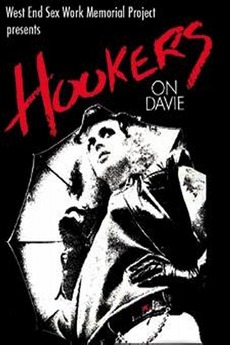 29. HOOKERS ON DAVIE
29. HOOKERS ON DAVIE
One of several prostitute documentaries to appear in the 1980s, but special to me because it’s centered on Davie Street in Vancouver, which is quite close to where I once lived. I vividly recall seeing (and being propositioned by) quite a few ladies of the night while crossing Davie, so I’m not phased by the subculture depicted in this film. Shown are multiple hookers making the nighttime rounds of Davie Street, being interviewed about their hopeless lives and the “johns” they service (most of whom, they claim, are lonely old men), and convening in a restaurant where one of them, an obvious transsexual, gets into a fight with one of her fellows. There are quite a few trans hookers on display here, in a film that is quite sad and often bleakly funny. It concludes somewhat incongruously, by profiling the efforts of a social outreach program devoted to helping abused prostitutes.
28. LA FEMME PUBLIQUE (THE PUBLIC WOMAN)
Anything by the late Polish madman Andrzej Zulawski is worth checking out, IMO. This outrageous 1984 production, loosely adapted from Dostoyevsky’s THE POSSESSED, is fairly typical of his work, being the unspeakably crazed account of a young woman working on a film crew and the (many) guys she services. Valerie Kaprisky plays this gal as a nut given to leaping around in seizure-like convulsions, but everybody in this film-within-a-film is completely batty. Val initially beds down with the film’s abusive director (Francis Huster), but when she finds him cheating on her she immediately leaps into the arms of the lead actor (Lambert Wilson). Unfortunately this apparent knight in shining armor turns out to be an even bigger psycho than everyone else (with a thing for chewing broken glass), and a murderer to boot. Poor Val also has to deal with a nutcase photographer (Roger Dumas) who snaps nudie pictures of her in her off-hours; given to unexpected fainting spells, the guy eventually goes totally bonkers and stuffs money into her every orifice. The ending, involving a suicide and an over-zealous cameraman, is affecting, but the near two-hour runtime is a bit much.
27. COUNTDOWN TO LOOKING GLASS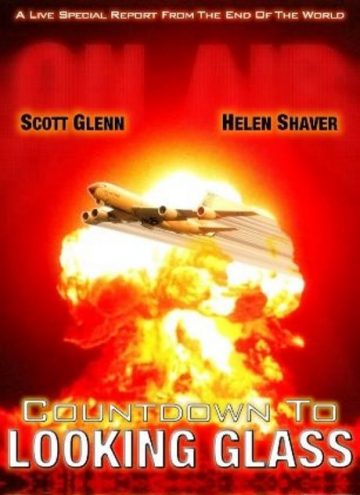
This Canadian-made dramatization of the events leading up to a nuclear war is quite dated in most respects, but still packs a wallop. That’s due largely to the fact that the events it depicts—a worldwide financial meltdown leading to increased tensions in the Middle East that ultimately trigger a nuclear exchange—contain many unsettling parallels to our current situation. It’s done up SPECIAL BULLETIN style, in a series of fake news broadcasts by a cable news network whose reporters include Helen Shaver and Scott Glenn. Also on hand are several real life political figures (Newt Gingrich, Robert Ellsworth, and Gene R. Baroque) to help make the proceedings seem more realistic. The illusion is broken, however, by scenes of Shaver, Glenn and the other principals conferring behind the scenes, which only slow things down. The film is at its best in the mock newscasts, with miles of stock documentary footage decontextualized to serve the filmmakers’ ends. Especially powerful is the climactic nuclear exchange, with an on-air Glenn buffeted by the blasts as his video feed cuts in and out.
26. FIRSTBORN
This film shows its 1980s pedigree in its narrative trajectory, which is initially quite strong but goes completely off the rails. It’s a dramatization of the worst fears of every kid living with a divorced mother, with said mother pairing up with an abusive deadbeat who makes life hell for everyone involved. The mother is played by the always-welcome Teri Garr, and the kid by eighties mainstay Christopher Collet (of SLEEPAWAY CAMP and THE MANHATTAN PROJECT), while Peter Weller is tasked with essaying the deadbeat (coming off a similar role in SHOOT THE MOON) and a debuting Corey Haim plays Collet’s younger brother. Director Michael Apted keeps the proceedings gripping and authentic, with Weller’s assholery growing increasingly virulent as the film advances, encompassing physical abuse and drug dealing, and Collet and Haim taking out their frustrations on the people around them (as in the film’s most satisfying scene, in which Collet gives his asshole English teacher a most appropriate dressing-down). It’s just too bad about those ridiculous (and very eighties) final scenes, involving a brawl that concludes with Collet banishing Weller with a double kick in the nuts, and in the process winning back his mother’s love; who knew that solving relationship problems was so easy?
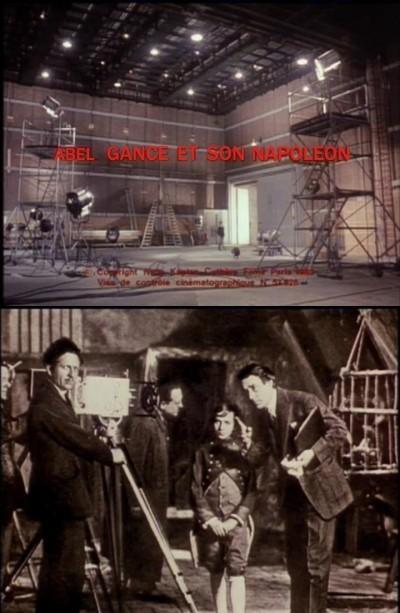 25. ABEL GANCE ET SON NAPOLEON (ABEL GANCE AND HIS NAPOLEON)
25. ABEL GANCE ET SON NAPOLEON (ABEL GANCE AND HIS NAPOLEON)
This made for French TV documentary is about the making of Abel Gance’s NAPOLEON (1927), and contains a wealth of verite footage of Gance and his collaborators filming this legendary work. We hear voluminous excerpts from Gance’s diaries, read by host Michael Drucker, and some audio spoken by Gance himself. Also included is a great deal of footage from NAPOLEON (including stills from the fabled “lost” sequence) and some perfunctory background info on its inception and ultimate fate. I doubt too many viewers outside the film buff set will find ABEL GANCE ET SON NAPOLEON very interesting, but those who value great cinema will find it an extremely well spent sixty minutes.
24. TRICHEURS (CHEATERS)
A pre-sellout Barbet Schroeder helmed this pitiless French language study of a compulsive gambler (Jacques Dutronc). He spends his days blowing what little money he has at roulette tables, and eventually meets a comely woman (Schroeder’s frequent co-star and future wife Bulle Ogier) who joins him in casino hopping. They eventually find a way to beat the tables through the use of electronics, but his gambling fever screws everything up. There’s admittedly nothing terribly profound or earth-shattering here, just fine, unpretentious drama.
23. THE HIT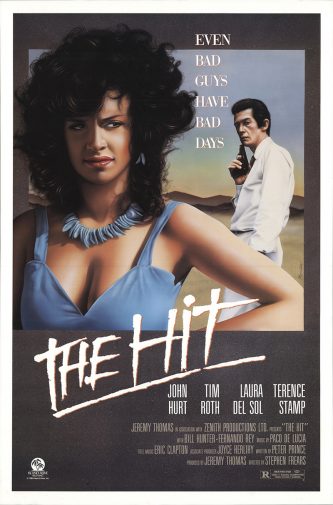
A stylish-as-Hell thriller from England’s sometimes great Stephen Frears. The setting is an especially scenic portion of Spain, where a criminal (Terence Stamp) who informed on his pals is hiding out. He’s captured by one of those aggrieved colleagues, a shade-wearing sociopath (John Hurt) who together with a hotheaded young protégée (Tim Roth) takes Stamp on a lengthy road trip, with a kidnapped hottie (Laura Del Sol) along for the ride. There’s some commonplace action and violence here and there, most of it uninspiring (such as a hopelessly implausible fight Roth has in a roadside bar). It’s best to concentrate on the excellent performances and resolutely quirky visuals.
22. VIGIL
There’s no story to speak of in this impressionistic image-fest from New Zealand’s Vincent Ward, but those images are so astounding I won’t complain overmuch. It focuses on a pre-teen girl (Fiona Kay), living on a farm in rural New Zealand, whose father falls to his death during a mountain hike. In addition to the trauma engendered by the tragedy the girl has to deal with a new father figure, in the form of a hunky bushman (Frank Whitten) who ingratiates himself into the lives of Kay and her mother (Penelope Stewart). Ward’s primary concern was in conveying the young Ms. Kay’s haunted inner world through incredibly evocative Werner Herzog-worthy visuals, displaying a staggering filmmaking talent that has been only partially utilized in the years since. Needless to add, VIGIL works best on a big screen, and in its original widescreen format; to employ an oft-used film nerd cliché, if you haven’t seen it in that form then you just haven’t seen it.
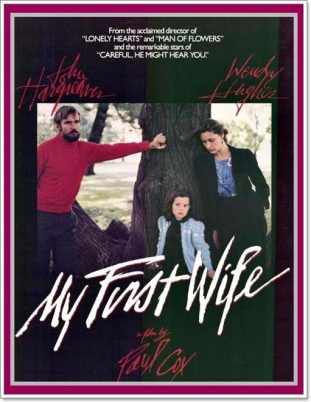 21. MY FIRST WIFE
21. MY FIRST WIFE
Another lacerating look at divorce from the eighties. Like SHOOT THE MOON and SMASH PALACE, this Australian feature from writer-director Paul Cox features a self-centered man (John Hargreaves) who goes to pieces when his wife (Wendy Hughes) leaves him. Cox based it on his own experiences, and maybe that’s why Hughes comes off as such a cold-hearted, one-dimensional bitch. The film is good, though, in the way it refuses to look away from the devastation wrought by what turns out to have been a sham marriage, or to provide easy solutions; a seemingly cathartic sex scene toward the end quickly turns into, simply, one of the most uncomfortable movie scenes ever.
20. DEATH WARRIOR (OLUM SAVASCISI)
This may be the looniest Turkish film I’ve seen—and believe me, that’s saying a great deal! It was directed by and stars Cuneyt Arkin (Turkey’s answer to Bruce Lee) as a police inspector called in to battle a band of renegade ninjas. That’s about all there is to the film plot-wise, which appears to be a crudely stitched-together succession of action sequences from different movies. Let’s see: there’s a woman getting attacked in her swimming pool, a DIRTY DOZEN-like mission briefing, a levitating rock, an EVIL DEAD-like POV camera chase, innumerable cheesy martial arts duels (many of which are cut short before they’re even finished), a slime monster, a motorcycle chase, a woman who transforms into a toad, an evil plant, etc., etc., etc. No, none of it never makes much sense, but that sense of freeform invention is a large part of what makes this mess so much dumb fun.
19. STATE OF WONDER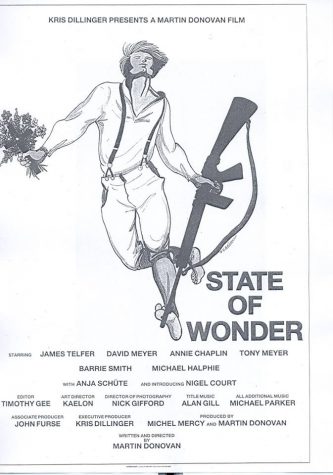
The largely forgotten debut feature by Argentina’s Martin Donovan, who’s best known these days for oddities like APARTMENT ZERO and MAD AT THE MOON. STATE OF WONDER is every bit as eccentric as those subsequent films, being a fable about Pichirica (Nigel Court), a childlike eccentric living in an Irish village. This place is under siege by a military force fighting a band of militant rebels, whose respective leaders happen to be twins (and played by the actual twin brothers Tony and David Meyer). Pichirica becomes a pawn in the struggle, with both sides looking to use his innocence and purity to further their respective agendas. The tragic denouement isn’t exactly difficult to foresee (hint: things don’t end well for the Christ-like Pichirica), but packs a punch nonetheless. The same can be said for the film overall, which has a simplicity and straightforwardness that matches the worldview of its central character, and makes excellent use of its scenic Irish locations. Only some youthful self-indulgence on the part of Donovan, who cast himself in a pivotal role to which he devotes a bit too much screen time (particularly in an interminable scene in which he warbles rock tunes to an inexplicably admiring crowd), mars the effect.
18. GRANDMOTHERS RECHARGE WELL (“BABICKY DOBIJEJTE PRESNE!”)
This Czech satire owes more than a little to Ray Bradbury’s I SING THE BODY ELECTRIC!/THE ELECTRIC GRANDMOTHER (which took the form of a third season TWILIGHT ZONE episode, 1969 short story and 1982 TV movie), but taken on its own terms it’s quite good. In fact, it’s something of an improvement on Bradbury’s intriguing but obnoxiously sentimental tale, as sentimental is something this film most definitely isn’t. It concerns a harried violinist (Jiri Labus) who purchases a robotic grandma (Libuse Havelkova) to look after his bratty children, but this grandma turns out to have unpleasant proclivities, and proves much more difficult to get rid of than it was to procure. The film has a sense of jittery apprehension and a matter-of-fact surrealism, and it’s also a credible piece of science fiction, with the robotic grandmother’s bad behavior presented with frank and inescapable logic. I could, however, have done without the overly broad comedy (such as the protagonists’ neighbors spying on them and making dopey comments), which only distract from Rychman’s otherwise spot-on satire.
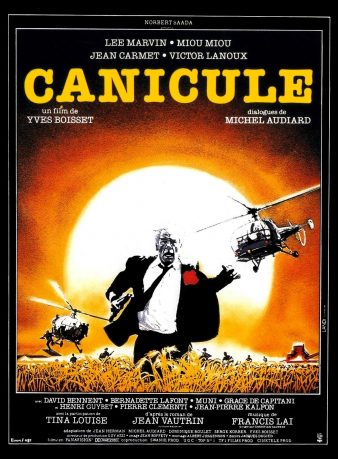 17. DOG DAY (CANICULE)
17. DOG DAY (CANICULE)
A prime example of French grindhouse moviemaking whose major commercial shortcomings were that it appeared a decade too late and in the wrong language. Had it been released in 1974 and in Italian, I suspect DOG DAY’S reception would have been much warmer. It features Lee Marvin in one of his final roles, as a criminal on the run from police following a bank robbery. After burying the stolen money in a field Marvin hides out in a secluded farmhouse, whose inhabitants turn out to be infinitely viler and more corrupt than he. Featured are Miou-Miou as the farm’s matriarch, who’s hot for Marvin; Victor Lanoux as her abusive husband, who’s looking to get his hands on the loot; and THE TIN DRUM’s David Bennett as their bad seed son, who’s anxious to turn himself into a hero by killing Marvin. Murder and depravity become the order of the day as these degenerates all attempt to use Marvin for their own ends, and turn on each other in the process. Director Yves Boisset isn’t big on subtlety or refinement, but proves himself quite adept in the realm of gut level exploitation.
16. CLASS RELATIONS (KLASSENVERHALTNISSE)
Undoubtedly the screen’s premiere transposition of Franz Kafka’s AMERIKA. It was made by the German filmmaking team Jean-Marie Straub and Daniele Huillet, who specialize in ultra-spare Bressonian filmmaking that’s very much in evidence throughout this music-less black-and-white film. In true Straub-Huillet fashion every shot is held far longer than is standard, with none of the expected cutaways or intercutting. The film is also, as in Kafka’s original, extremely dialogue-heavy, with very little in the way of action or incident in its narrative of a young man, sent to make his fortune in America, who finds work as an elevator operator in a posh hotel, only to be fired for disrespecting his boss. The setting is allegedly America, yet the film clearly tales place in Europe, with everyone speaking German; this is in keeping with the book, whose author never actually visited “Amerika,” and was in fact writing about his own country. Thus CLASS RELATIONS can be said to be one of the most thoroughly Kafkaesque films ever, and a uniquely fascinating and evocative piece of cinema in its own right.
15. THE LONELY GUY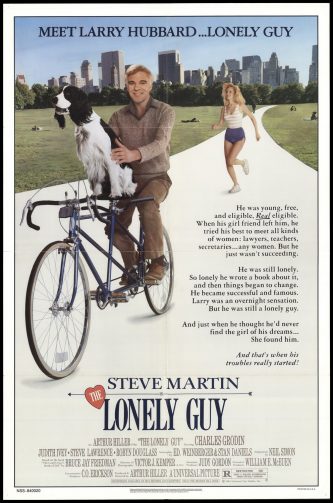
This Arthur Hiller directed goof is admittedly a bit misconceived. It treats the very real issue of suicidal loneliness in a manner so jokey and inconsequential it makes AIRPLANE! look like high drama, and Steve Martin is wildly miscast as a guy who (as described the book THE LONELY GUY’S BOOK OF LIFE that inspired this film) is supposed to be overweight, middle-aged and balding—none of which in any way describe Mr. Martin here. Yet the film is quite entertaining in its own breezy, lighthearted way, and contains some genuinely funny bits (including the spotlight shined on Martin when he enters a restaurant by himself and the unforgettably profane lines he writes that get him fired from his job as a greeting card scribe). As for Steve Martin himself, he actually does a good job commanding attention in his first semi-normal film role. Plus, the opening credits sequence, depicting Martin silhouetted against gaudy greeting card paintings of NYC, is among the most gorgeous there is.
14. STRANGERS IN PARADISE
This ridiculous sci fi musical from the late Ulli Lommel wants very much to be a cult sensation a la REPO MAN or THE ROCKY HORROR PICTURE SHOW, but fails spectacularly—yet it’s also very likely the most interesting entry in Lommel’s post-BOOGEY MAN (1980) oeuvre. It begins in Nazi Germany, where the supernaturally endowed mesmerist Jonathan Sage (Lommel) gets cryogenically frozen. Cut to early 1980s Southern California, where a bunch of rebellious teens are being held down by their conservative parents, who want to utilize the recently unthawed Sage to keep their children in line. Throughout, Lommel panders rather shamelessly to an imagined 1980s youth demographic (with then-hip things like break dancing and aerobicizing thrown in). Also on hand is actor/musician Richard Green, the performer of the film’s most memorable song, a jazzy neo-swing number that feels out of place amid the eighties-centric tunes that clutter the rest of the film. Those tunes contain subversive-for-the-era lyrics like “I wanna make it with my own kind…and I like it just fine!” and “What a lovely day to control the world, I dig it! I dig it! I dig it! I dig it!” But STRANGERS IN PARADISE isn’t a completely non-worthwhile film, particularly now, when its period specific silliness has taken on a deeply nostalgic sheen.
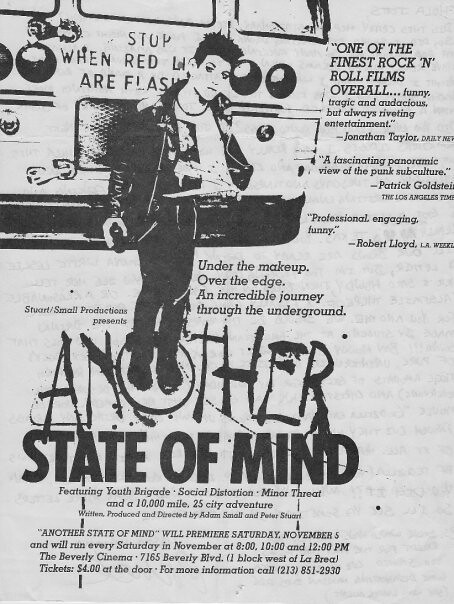 13. ANOTHER STATE OF MIND
13. ANOTHER STATE OF MIND
An oft-brilliant documentary about the punk subculture, circa 1982. It’s not as good as Bruce MacDonald’s non-documentary HARD CORE LOGO (IMO the best film ever made on the subject), which was about aging punks; ASOM, on the other hand, focuses exclusively on under-25 year olds, making one wonder how its subjects feel about their youthful rebellion today. But anyway: at the film’s center is a road tour in a school bus, undertaken by members of the bands Social Distortion and Youth Brigade. Since none of these guys have any money (and don’t expect to make much touring) this seems a pretty iffy proposition, and their subsequent misadventures only bear that out. The bus breaks down constantly, nerves are frayed and the participants begin bolting; by the end, when the tour is cut short in Washington, D.C., only four people remain out of the original eleven. The filmmakers, for good measure, also look at runaway children, a Christian-run punk reformation house and the slam dancing phenomenon. No matter how turned off you might be by the world this film lays bare, it’s hard not to feel a little sadness at the sight of the school bus abandoned in a garage as its members resignedly hitch rides back to LA, their tour forgotten.
12. DREAMSCAPE
Surely you eighties kids remember DREAMSCAPE, 1984’s other dream-themed horror movie. Much slicker and more durable than A NIGHTMARE ON ELM STREET, it’s about a guy (Dennis Quaid) who can enter into people’s dreams, eventually using this talent to thwart a presidential assassination. The proceedings hold up reasonably well despite an overdose of eighties movie bull rap; I’d include in that category the grating synthesizer score, some cut-rate special effects and an overall air of barely-concealed misogyny (the token female Kate Capshaw is on hand solely to look pretty and get banged). But that snake monster is unforgettable, and there are some inspired scares in the nuclear holocaust-themed dream sequences that pop up throughout.
11. THE ELEMENT OF CRIME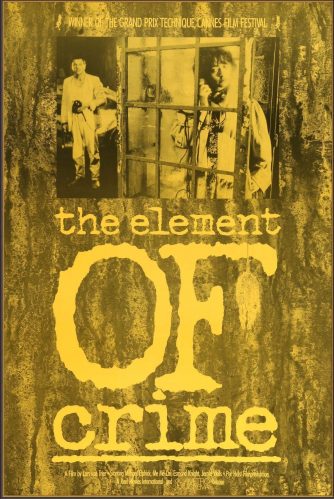
A frankly overwrought and immature first feature by the great Lars Von Trier that I persist in loving. Von Trier’s filmmaking skill, even at such an early stage (he was 25), is evident throughout this surreal murder mystery. Set in some unidentified post-apocalyptic landscape, it’s about a disturbed ex-cop (Michael Elphick) undergoing hypnosis so he can remember the details of an investigation into a series of child murders. The overall ambiance is as dreamlike as anything in ERASERHEAD or BEGOTTEN, a slow moving drift through a profoundly dark and grimy universe, visualized in sepia-toned black and white with occasional bursts of blue and green. Von Trier’s major influences—Tarkovsky and Dryer—are a bit too evident (this is where the immaturity comes in), but the brooding style is totally unique. The result is a maddening yet mesmerizing spectacle that in terms of atmospheric apprehension comes very close to attaining masterpiece status.
10. SONATINE
Every now and again I turn up a gem in my (normally uninspiring) exploration of Canadian cinema. 1984’s SONATINE is such a gem, an uncompromising exploration of adolescent angst in early eighties Quebec. A young Pascale Bussières plays one of a pair of teen girls (Marcia Pilote plays the other) who elect to commit suicide in response to the indifferent and uncaring world in which they find themselves. Writer-director Micheline Lanctot establishes a suffocating atmosphere of urban indifference, evoked in various crowded-yet-desolate settings. It’s in such settings that Bussières attempts to strike up a friendship with a comely bus driver (Pierre Fauteux) and Pilote seeks solace in the arms of an eccentric ship’s hand (Kliment Dentchev), but both relationships come to nothing, as it seems does everything else in these girls’ lives. This leads to an ending that even the film’s detractors tend to admit is quite powerful, taking place in a subway car where the girls undertake a most shocking course of action—although the behavior of the people around them is even more shocking. The ultra-spare and measured filmmaking recalls the late period films of Robert Bresson (THE DEVIL, PROBABLY in particular), although Lanctot’s approach is less self-conscious. Her use of sound is especially laudable, with the jarring noises of city life being an integral part of the film’s tapestry, as are the varying dialogue levels (at one point the chatter is nearly turned down completely when Bussières covers her ears during a lecture). In a word: powerful.
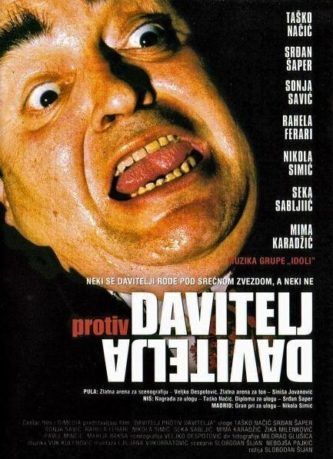 9. STRANGLER VS. STRANGLER (DAVITELJ PROTIV DAVITELJA)
9. STRANGLER VS. STRANGLER (DAVITELJ PROTIV DAVITELJA)
This Serbian comedy-chiller is as wild, campy and grotesque as anyone could possibly desire. Pivoting on two stranglers, one of them a middle-aged loser (Tasko Nacic) who lives with his mother and the other a young rock star (Srdjan Saper) obsessed with the crimes of his rival, it’s chock-full of goofball slapstick, over-the-top gore, impossible-to-predict plot twists and homages to (and/or parodies of) PSYCHO, all pulled off in surprisingly elegant fashion. There’s nothing else quite like this indescribably nutty concoction, which if given half a chance could have become a midnight movie sensation on the level of THE ROOM or even THE ROCKY HORROR PICTURE SHOW.
8. NINJA III: THE DOMINATION
I just can’t get enough eighties cheese, and this Cannon production is about as cheesy as they come. Any film that mixes ninjas and demonic possession is a must-see in my book! The story has a young woman (BREAKIN’S Lucinda Dickey) possessed by the spirit of a mean ninja, supported by Sho Kosugi (playing an entirely different role than he did in ENTER THE NINJA, which this film allegedly sequelized). Particularly fun sequences include the jaw-dropping opening golf course slaughter, the heroine’s hypnosis by a video game(!), the brutal strangling of two women in a hot tub and an attempted exorcism that looks and plays like Dario Argento at his most unrestrained. The film, for all its ridiculousness, is admirably unpretentious and action-centered, exactly as you’d expect from a ninja-horror movie—a definite case of two great tastes that taste great together.
7. COMBAT SHOCK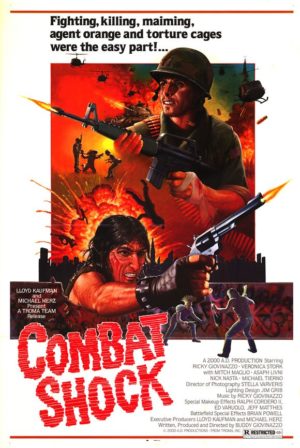
One of the seminal American indies, made for pennies by filmmaker Buddy Giovinazzo in Staten Island, NY. The filmmaker’s brother Ricky plays a penniless Nam vet on a downward spiral: his apartment is a shithole, his wife is a nag and his neighbors are all mobsters, junkies and prostitutes. Worst of all, he’s got a squalling mutant baby to contend with. After a fruitless day trying (and failing) to find work he eventually snaps, shooting three mobsters before offing his wife, putting the baby in the oven and turning his gun on himself. A nasty, grotesque, uncompromising film that had no budget to speak of, and it shows; the nonprofessional cast flubs scene after scene, and the photography never rises above the level of a student film (and a pretty inept one at that). Nevertheless, I can’t imagine COMBAT SHOCK any other way. Its technical raggedness perfectly suits the desperate characters and their locale, and the final 15 minutes are among the most powerful I’ve seen in any movie, in any form.
6. BLACK DEVIL DOLL FROM HELL
An absolutely mind-roasting bad movie classic! I don’t know much about this film or its writer-producer-director Chester N. Turner (who also made the equally appalling TALES FROM THE QUADEAD ZONE), except that it inspired 2009’s BLACK DEVIL DOLL, which is a legitimately good movie—although it isn’t nearly as odd, offensive, shocking or laugh-out-loud funny as BLACK DEVIL DOLL FROM HELL. It’s about a lonely woman (Shirley L. Jones) who purchases a black marionette that turns out to be sentient—and a trash-talking sex fiend! You know a film is in trouble when its opening credits, presented over a black screen, last a full six minutes, and there are many, many more examples of gratuitous padding in endless scenes of the protagonist wandering around her apartment. Keeping people and objects in the frame is a constant challenge for Turner, as is maintaining a steady camera. The sound mixing is an even bigger problem, with an ambient drone that runs throughout the entire film and is often so loud it drowns out the dialogue, as does the hideous synthesizer score (which to add to the annoyance frequently utilizes siren-like drones). As for the acting, it’s pretty much as you’d expect. What really makes this film the anti-classic it is, however, is the title character and its unforgettable growling vocals by Keefe Turner—who’s also credited with the puppetry, which is likewise as you’d expect.
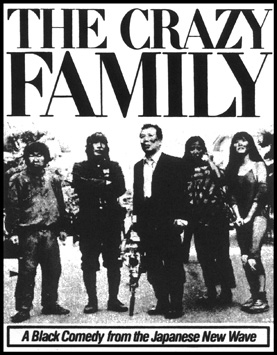 5. THE CRAZY FAMILY (GYAKUFUNSHA KAZOKU)
5. THE CRAZY FAMILY (GYAKUFUNSHA KAZOKU)
Sogo Ishii’s CRAZY FAMILY is widely credited as the movie that kicked off the Japanese new wave of the late eighties and nineties. It begins with the eponymous family moving into an ultra-modern bungalow. Dad (Katsuya Kobayashi) is obsessed with keeping the place tidy, and so wigs out when he discovers termites have set up shop; he becomes determined to de-bug the house at all costs, digging a giant hole in the kitchen floor in order to find the termites’ lair. His wife (Mitsuko Baishô), meanwhile, rebels against her society-imposed role of prim and proper care-giver, and takes to performing strip-teases for their visiting grandpa (Hitoshi Ueki) and his lecherous buddies. The nerdy son (Yoshiki Arizono) spends his days building strange technological contraptions while his sister (Kudou Yuuki) becomes dangerously obsessed with her favorite pop stars. Eventually dad barricades his family inside the house and attempts to poison them, inciting a veritable carnival of violence and destruction. Ishii was truly at the top of his game here, with a kinetic and highly innovative style that freely utilizes fade outs, jump cuts and a hard rock score to powerful effect.
4. DEATH WISH CLUB (THE DARK SIDE TO LOVE; GRETTA; CARNIVAL OF FOOLS)
This unspeakably loopy concoction is one of the craziest movies of all time. It’s also unintentionally hilarious, with production values that might charitably be described as nonexistent, but those things have the effect of increasing the schlocky fun. The story involves a college dude named Glenn (Rick Barnes) who becomes obsessed with Gretta (Merideth Haze), a sexy porn star. Gretta, alas, is a severely disturbed woman who apparently “lives in the fourth dimension,” and is part of a band of freaks who like to hold gatherings where they expose themselves to possible death (via a poisonous bug, a deadly electrical current and a falling bowling ball). But that’s not all: Gretta, it turns out, has a male alter ego named Charlie who periodically overtakes her. This is weirdness on a truly cosmic scale, with much priceless Ed Woodian dialogue (“Why do you try so hard to hide the nice person inside of you?”) and an unbelievable performance by Ms. Haze. Her last name pretty much sums up the disarmingly beautiful Meredith’s acting style, but she’s got a highly distinctive screen presence; this may be Ms. Haze’s sole screen credit (not counting NIGHT TRAIN TO TERROR, which includes footage from this film), but when she’s on screen I guarantee you won’t be looking at anything else.
3. CRIMES OF PASSION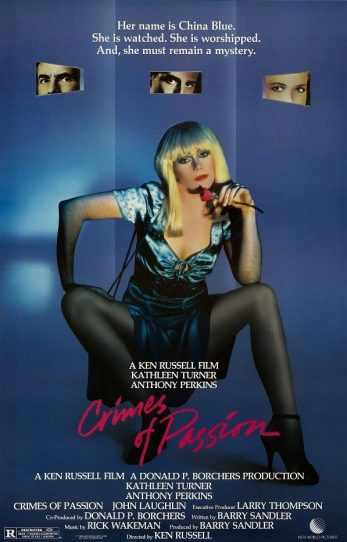
This crazed gem was an undoubted career highlight of its director Ken Russell, who was never known for his restraint. Kathleen Turner, in her ballsiest performance to date, plays a successful fashion designer who masquerades as a hooker named China Blue. In said guise she finds herself pursued by two freaks: John Laughlin as a dorky yuppie and Anthony Perkins as a maniac who fancies himself a priest. The film is part psycho-thriller, part sex drama, part black comedy and all Ken Russell, meaning it’s often (intentionally) unclear whether you’re supposed to laugh. The notorious nightstick scene (cut from the theatrical release) is a classic bit of cinematic dementia, as is the human penis gag, the “It’s a Lovely Life” music video and Perkins’s got to-see-it-to-believe-it climactic rendition of “Come on, get happy.”
2. ELECTRIC DREAMS
Back in the day I found this film a mildly enjoyable piece of fluff, but now it seems like some kind of time capsule masterpiece. It hasn’t dated especially well, but ELECTRIC DREAMS’ retro quaintness is a large part of its charm. The film emanates from a time when computers were mysterious, unknowable entities that people were reluctant to bring into their homes. In ELECTRIC DREAMS a mild-mannered architect (Lenny Von Dohlen) does just that, installing a desktop computer in his San Francisco apartment. Said computer, having been dropped on the floor by a saleswoman and doused with wine by a clueless Von Dohlen, quickly takes over the latter’s life, and talks to him in the bargain (with vocals by Bud Cort). The machine also falls in love with its owner’s attractive neighbor Virginia Madsen, which complicates things considerably, as Von Dohlen also has a thing for her. As directed by music video ace Steve Barron the film is extremely fun to watch, with highly mobile Steadicam visuals courtesy of ace cinematographer Alex Thompson. In keeping with his MTV credentials, Barron packs the proceedings with gratuitous music video interludes, which only further the nostalgia factor (as such things were quite common in eighties filmmaking). The of-its-time Giorgio Moroder score is likewise quite charming, and encompasses what I feel is one of the greatest musical sequences of all time: the impeccably visualized and edited music duel between a cello playing Madsen and the computer. The concluding sequence is also a jaw-dropper, in which a ridiculous pop tune is blasted over the world’s airwaves, to which people everywhere can’t help but kick up their heels and dance—it simply doesn’t get more eighties than that!
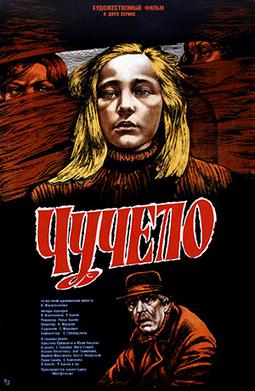 1. SCARECROW (CHUCHELO)
1. SCARECROW (CHUCHELO)
There are quite a few things about this Russian drama that I find bothersome, yet it worked me over like no other film in recent memory. An account of bullying and peer pressure in a middle school setting, SCARECROW was reportedly the top-grossing Soviet film of 1986 (having been withheld from release for two years). Given the subject matter, it could have easily become AFTERSCHOOL SPECIAL material, or possibly an Easternized WELCOME TO THE DOLL HOUSE, but director Rolan Bykov gives the proceedings a mystical and poetic edge. The soulful Christina Orbakaite plays the young Lena, who’s none-too-affectionately called Scarecrow by her classmates. She’s an outcast from the start, and her problems only increase when her class plays hooky one day, and a boy Scarecrow likes informs a teacher. In order to curry favor with the guy Scarecrow takes the blame, facing increased ridicule and ostracization. Bykov explores many pertinent themes in this deceptively simple tale, with oft-impressive imagery and a brooding atmosphere that at times grows downright gothic. I could admittedly have done without the hopelessly dated electronic music score and bloated 2 hour plus runtime, but by the end I found it impossible not to be deeply and profoundly moved by what I’d seen.
